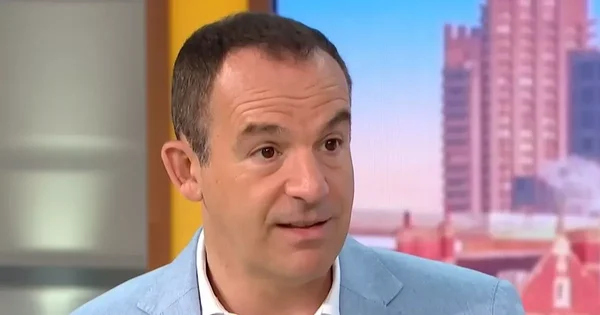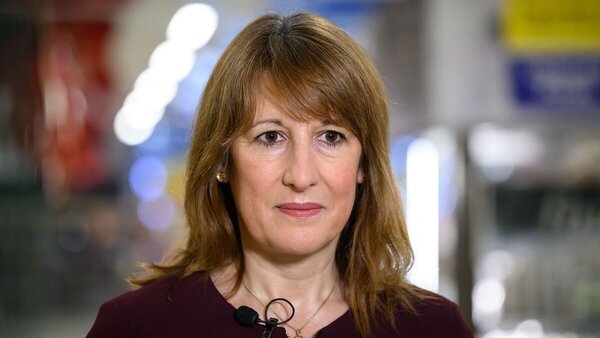Let’s Get Started...
Gift Aid might feel like a small checkbox when you donate, but it can make a big difference to both your favourite charities and your own tax bill.
Whether you’re a basic-rate taxpayer or pay a higher rate and want to claim extra relief, knowing when and how to declare Gift Aid keeps you compliant and could save you money. This guide explains exactly when Gift Aid needs to appear on your 2024/25 tax return, and how to get the full benefit.
Introduction
Donating to charity through Gift Aid boosts your generosity by 25%, but it can impact your tax situation. This process is formally known as the gift aid scheme, which allows donors to increase the value of their donations through tax reclaim processes. Higher and additional rate taxpayers must declare these donations to claim additional tax relief.
Basic rate taxpayers typically don’t need to include Gift Aid on their tax return. Understanding when declaration is necessary helps maximise your tax benefits while staying compliant.
The UK’s first personal tax app, Pie tax, makes managing Gift Aid declarations simple. Using such tools can also help you claim tax relief sooner by ensuring timely and accurate submissions. Or if you’re just here to get to grips with it all, let’s break it down!

What is Gift Aid and How Does it Work?
Gift Aid is a UK tax relief scheme that allows charities to claim an extra 25p for every pound you donate. This means your donation goes further without costing you more. For each pound you give (the net donation), the charity receives a higher gross amount after Gift Aid is applied.
When you make a Gift Aid donation, you’re confirming you’ve paid enough Income Tax or Capital Gains Tax to cover the claim. The charity then reclaims this basic rate tax from HMRC.
For higher or additional rate taxpayers, you can claim back the difference between your tax rate and the basic rate. This additional relief comes through your tax return. Charitable giving through the Gift Aid scheme can also provide benefits for inheritance tax planning, especially when using charitable trusts.
For example, if you donate £100, the charity receives £125 in total. If you’re a 40% taxpayer, you can claim back £25 on your Self Assessment.
Eligibility Criteria for Gift Aid
To qualify for Gift Aid, you must be a UK taxpayer who has paid enough Income Tax or Capital Gains Tax in the relevant tax year to cover the amount the charity will reclaim. The tax year runs from 6 April to 5 April, and you can claim Gift Aid on donations made in the current tax year as well as the previous four tax years.
If you’re a higher rate taxpayer, you can claim the difference between your higher rate and the basic rate of tax on your Self Assessment tax return, giving you extra tax relief on your charitable giving. It’s important to ensure you have paid enough tax in the tax year to cover all Gift Aid claims you make, otherwise, you may need to pay the difference to HMRC.
You cannot claim Gift Aid if you have already claimed tax relief on the same donation in another way. To qualify for Gift Aid, your donation must be made from your own money, and you must not receive anything in return that could be considered a benefit. Always check that you meet the eligibility criteria before making a Gift Aid declaration to ensure your donation qualifies for tax relief and is compliant with HMRC rules.
Do I Need to Declare Gift Aid on My Tax Return?
If you’re a basic rate taxpayer (20%), you typically don’t need to declare Gift Aid donations. The charity claims the basic rate tax relief directly, and there’s nothing more for you to do. However, Gift Aid rules may not apply to all types of donations, such as raffle tickets or donations made at fundraising events, so donors should check eligibility.
Higher rate (40%) and additional rate (45%) taxpayers should declare Gift Aid donations to claim the extra tax relief. This can significantly reduce your tax bill.
You’ll also need to declare Gift Aid if you receive Child Benefit and your income exceeds £50,000. Donations can reduce your High Income Child Benefit Charge.
Declaration is also necessary if you don’t pay enough tax to cover the Gift Aid claimed on your donations. In this case, you’ll need to pay the difference to HMRC.
How to Declare Gift Aid on Your Self Assessment
Declaring Gift Aid on your tax return is straightforward. You’ll find the section under “Charitable giving” in your Self Assessment form. Completing this section ensures that all necessary information is provided for HMRC to process your claim.
You need to fill in the correct figures on your tax return. Enter the actual amount you donated, not the amount including the Gift Aid top-up. For example, if you gave £80, that’s what you declare, not the £100 the charity receives.
You may also be required to sign a Gift Aid declaration form to authorise the charity to claim tax relief on your behalf.
Keep all your donation receipts and acknowledgment letters from charities, and make sure to keep all details of your donations, including dates and amounts, for your records. HMRC might ask to see these as evidence of your charitable giving.
If you’re using the online Self Assessment, the system automatically calculates the tax relief you’re entitled to. This is based on your tax rate and donation amount.

When Gift Aid Must Be Declared (Even by Basic Rate Taxpayers)
If your donations exceed your tax liability for the year, you must declare this. For example, if you donate £1,000 through Gift Aid but only pay £200 in tax, you’ll need to pay the difference. If you cease to pay enough Income Tax or Capital Gains Tax, you should inform the charity, as this affects your eligibility for Gift Aid on future donations.
When your income exceeds £50,000 and you receive Child Benefit, declaring Gift Aid can reduce your charge. This could potentially save you money.
If you make substantial donations that exceed 25% of your income, you should declare these. This ensures everything is properly recorded with HMRC.
Basic rate taxpayers who make donations from joint accounts should check who’s claiming the Gift Aid. This avoids any confusion or potential issues with HMRC. Submitting accurate information to HMRC is important to prevent any problems with your Gift Aid claims.
Special Gift Aid Circumstances and Considerations
You can carry back Gift Aid donations to the previous tax year if made before filing that year’s return. I once helped a client save nearly £500 by backdating a large donation made in April.
Donations of land, property, or shares have different rules from cash donations. Check HMRC guidance if you’re giving these types of assets.
Gift Aid can also apply to donations made through a fundraising collection, such as at a funeral or event, but to ensure eligibility, it’s important to use dedicated online donation pages where donors can make Gift Aid declarations.
Married couples should note that Gift Aid is claimed by the person who makes the donation. You can’t transfer the tax relief between spouses.
If your income changes during the year, review your Gift Aid declarations. Ensure you’re still paying enough tax to cover the Gift Aid claimed by charities.
Record-Keeping for Gift Aid Donations
Both charities and Community Amateur Sports Clubs (CASCs) are required to keep detailed records of Gift Aid donations, including the donor’s name, address, and the amount donated. The charity must also retain a copy of the Gift Aid declaration, which confirms that you are a UK taxpayer and have paid enough tax to cover the claim.
As a donor, it’s wise to keep your own records of all Gift Aid donations and declarations. This includes noting the date, amount, and method of each donation, as well as keeping copies of any written or online Gift Aid declarations you’ve made. Good record-keeping is essential if you need to claim tax relief, complete a Self Assessment tax return, or if you ever need to cancel a declaration.
If your tax status or address changes, update your records and inform the charities you support, as this could affect your eligibility for Gift Aid. Keeping accurate records helps ensure you can claim tax relief without issues and provides security if HMRC requests evidence of your charitable giving.

Cancelling a Gift Aid Declaration
If you need to cancel a Gift Aid declaration, simply notify the charity in writing, providing your name, address, and the date of your original declaration. You can cancel your declaration at any time, whether you no longer pay enough tax to cover the Gift Aid claim, your tax status changes, or you decide to stop supporting the charity.
Once you cancel your Gift Aid declaration, the charity will not be able to claim Gift Aid on any future donations you make. If you have claimed tax relief on the same donation in another way, or if you are unable to cover the tax, it’s important to cancel your declaration promptly to avoid any issues with HMRC.
Keep a record of your cancellation, including the date and method of notification, for your own records. For more information on how to cancel a Gift Aid declaration, you can visit the HMRC website or contact their helpline for guidance. This ensures your donations and tax affairs remain accurate and up to date.
Common Gift Aid Declaration Mistakes to Avoid
Not keeping proper records of your donations is a common pitfall. Always save receipts and charity acknowledgments for at least six years.
Some people incorrectly include the Gift Aid amount when declaring donations. Remember to only declare the amount you actually gave.
Forgetting to tick the Gift Aid box when making donations means charities can’t claim the extra 25%. This reduces the impact of your generosity. Always use the official donation or Gift Aid declaration page on the charity's website to ensure your donation is eligible.
Missing the deadline for claiming previous years’ donations can mean losing out on tax relief. You generally have four years to claim.
When filling out online forms, be careful, entering the wrong word or phrase can sometimes trigger security checks, so double-check your entries.

Final Thoughts
Gift Aid is a fantastic way to boost your charitable donations without any extra cost to you. Most basic rate taxpayers don't need to worry about declaring it on their tax return.
Higher and additional rate taxpayers should always declare Gift Aid donations. This ensures you get the additional tax relief you're entitled to.
If your circumstances are complex or you're making very large donations, keep detailed records. Checking HMRC guidance will help you stay compliant while maximising tax benefits.
Remember that Gift Aid only works if you've paid enough tax to cover what the charities claim back. Always check this before making your declaration.
Pie tax: Simplifying Gift Aid on My Tax Return
Handling Gift Aid declarations doesn't need to be complicated with the right tools. Pie tax tracks your charitable giving throughout the year with minimal effort.
We automatically calculate how your Gift Aid donations affect your overall tax position. You can see the benefits in real-time as you make charitable contributions.
When tax return season arrives, Pie tax seamlessly includes your Gift Aid information in your Self Assessment. This makes filing with HMRC quick and accurate.
Why not see how Pie tax can simplify your tax life while helping you maximise the impact of your charitable giving?











